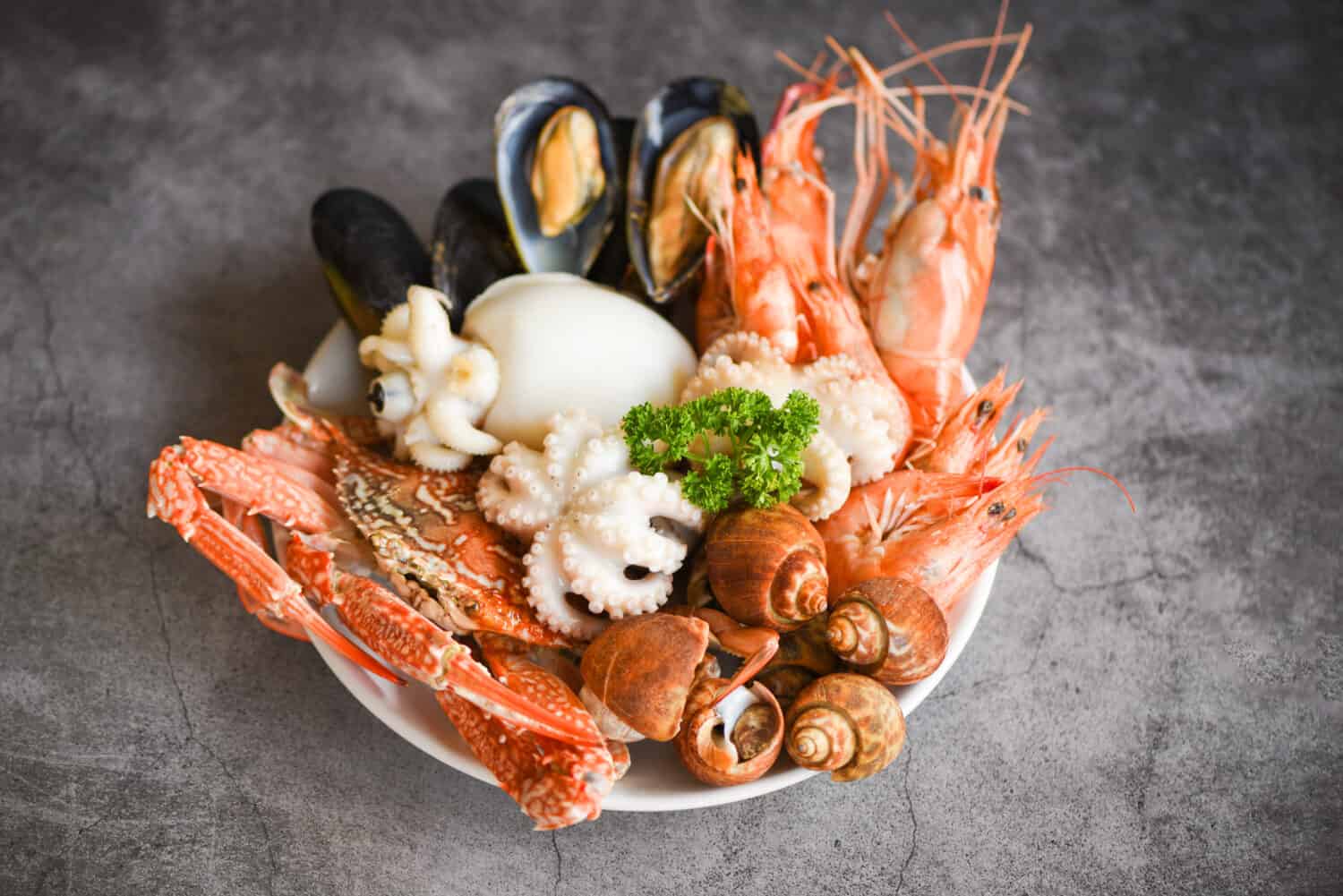If you’re a fan of seafood, you may have seen shrimp or prawns on a menu or at the seafood counter of your local grocery store. While they are pretty similar in appearance, did you know there’s actually a difference between prawns vs shrimp?
Prawns and shrimp are both classified as decapods, but they’re a part of different scientific families. Generally, shrimp are smaller than prawns and have a more flexible body due to the design of their shell. While prawns and shrimp taste similar overall, prawns are slightly sweeter.
No matter which you choose to cook for your next meal, both prawns and shrimp can be an excellent part of numerous recipes. Keep reading to find out more about what distinguishes prawns from shrimp and when to cook each.
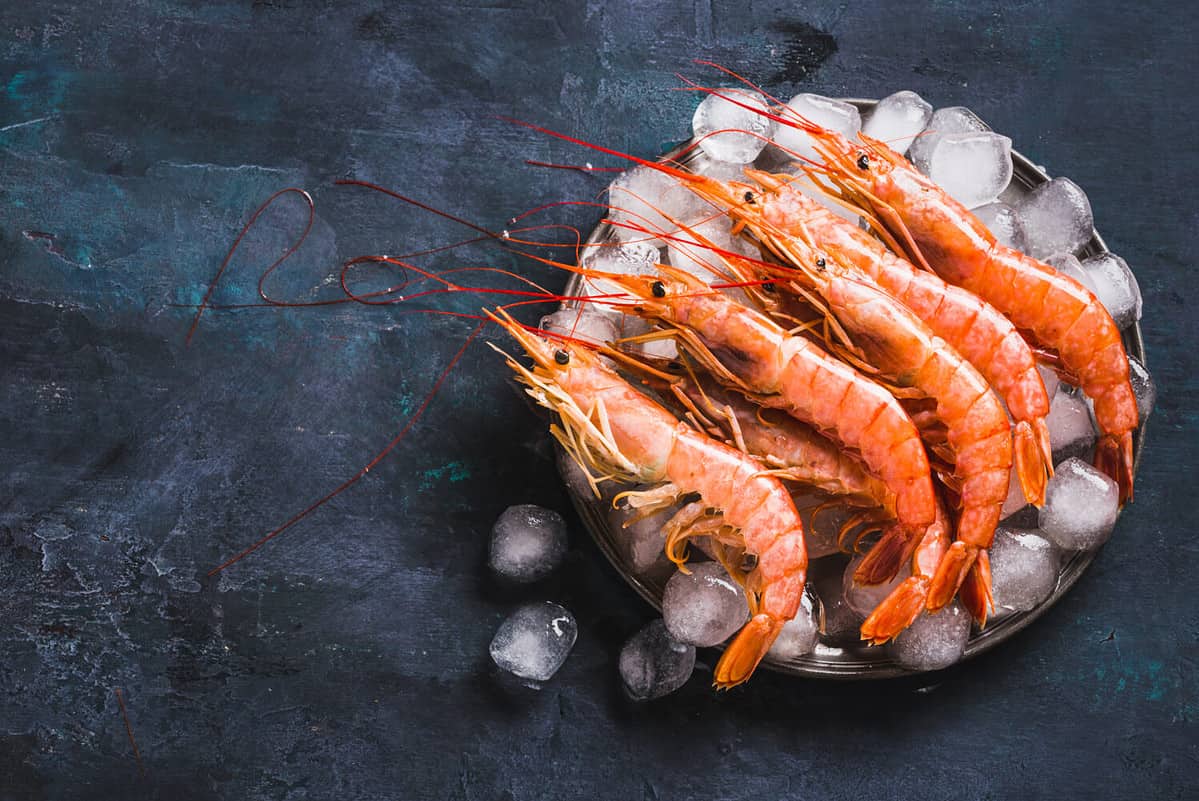
While prawn and shrimp have quite a bit in common, they're part of different animal families.
©leonori/Shutterstock.com
Prawns vs Shrimp: What Is the Difference?
Prawns and shrimp are types of seafood that are popular across the globe. Considering how similar they appear, it’s a common misconception that prawn is just a different name for shrimp but there is a scientific difference between the two.
It’s true that prawns and shrimps are both decapods, which means they’re crustaceans with 10 legs, but they are a part of different scientific families. While shrimp are a part of the Caridea family, prawns are a part of the Dendrobranchiata family.
- The must-have convenient reference guide for every home cook!
- Includes more than 8,000 substitutions for ingredients, cookware, and techniques.
- Save time and money on by avoiding trips to grab that "missing" ingredient you don't really need.
Aside from their classification, there are other ways to tell the difference between shrimp and prawns. Shrimp are generally smaller than prawns and they have claws on two of their legs while prawns have claws on three pairs of their legs. If you don’t eat seafood much, you may not tell the difference in the taste, but prawns do tend to be sweeter than shrimp.
4 Main Differences Between Prawns vs Shrimp
While prawns and shrimp have a lot in common, there are also plenty of differences between them. The main differences are:
- They’re different scientifically
Despite the fact that both prawns and shrimp are decapods, they’re a part of different families. - Shrimp are smaller than prawns
There are numerous types of prawns and shrimp species, but prawns are generally larger than shrimp, especially the ones that you’ll find in the store. - Prawns are sweeter than shrimp
While the difference in flavor may be subtle to most, prawns do tend to have a slightly sweeter flavor than shrimp. - Prawns have a different body
There are many similarities in the appearance of prawns and shrimp, however, shrimp have a more flexible body due to their shell and prawns have more claws or pinchers than shrimp as well.
Both prawns and shrimps can be a delicious part of your seafood meal and there are tons of recipes out there to choose from. Let’s take a closer look at prawns and shrimp and what makes each one unique.
What Are Prawns?
The water is filled with all kinds of interesting creatures, some of which make a delicious part of a seafood-based meal. Prawns are certainly one of these interesting creatures and it’s common to see them on menus or for sale at your local seafood counter. Considering prawns look like larger shrimp, many confuse the two or think that prawns are just a different type of shrimp.
Although prawns and shrimp do have many similarities, they’re not quite the same, and they come from different scientific families. Prawns are a type of crustacean from the same family as lobsters and crabs. Even though prawns can live in fresh, brackish, or salt water, they’re most often found in freshwater.
In places like the United Kingdom, you’re more likely to see prawns on a menu, while shrimp is more common in North America. Sometimes the word prawn is used to describe large shrimp, but actual prawns are different from a large shrimp.
Prawns are high in protein and can also contain numerous other nutrients such as calcium, phosphorus, and vitamin A.
How Do You Prepare Prawns?
If you purchase prawns, you can generally buy them cooked or uncooked. But how do you prepare them for eating or adding to a dinner entree? The preparation for prawns is the same whether you buy them cooked or uncooked.
Preparing your prawns generally includes removing their head and shell, then deveining them. Prawns can come in a variety of colors, but the ones you’ll purchase will usually be a grayish color when uncooked and turn pink when cooked.
What Are Shrimp?
If you’re in North America, you’re most likely used to seeing some form of shrimp on most restaurant menus. Like prawns, shrimp are decapods and have 10 legs. Shrimp fall under the Caridea family and live in both freshwater and saltwater.
Even though people sometimes use the word prawn to describe a large shrimp, even the larger species of shrimp are different from prawns. There is some confusion between the two because some types of prawn have shrimp in the name, like the Atlantic white shrimp.
Although shrimp often get thrown in the same category as fish, they’re actually not fish–they’re crustaceans. Unlike fish, shrimp don’t have an internal skeleton.
No matter how you prepare them, shrimp are a popular and delicious part of many North American dishes. The type of shrimp-based entrees you’ll see on a menu depend on where you live, but some of the most popular ways to eat shrimp are dishes like shrimp cocktail, shrimp scampi, and if you’re in the South–shrimp and grits.
How Do You Prepare Shrimp?
Like most sea creatures, it requires some preparation before cooking and eating shrimp. You can purchase shrimp cooked and already peeled, but if you purchase shrimp uncooked or from the seafood counter, you might need to prepare the shrimp yourself.
Preparing your shrimp is similar to the way you prepare prawns. If you purchase them uncooked or unpeeled, you remove the head of the shrimp, peel it, and then devein it. If the process of peeling the shrimp isn’t your cup of tea, you can always purchase them frozen or ready-to-cook.
- The must-have convenient reference guide for every home cook!
- Includes more than 8,000 substitutions for ingredients, cookware, and techniques.
- Save time and money on by avoiding trips to grab that "missing" ingredient you don't really need.
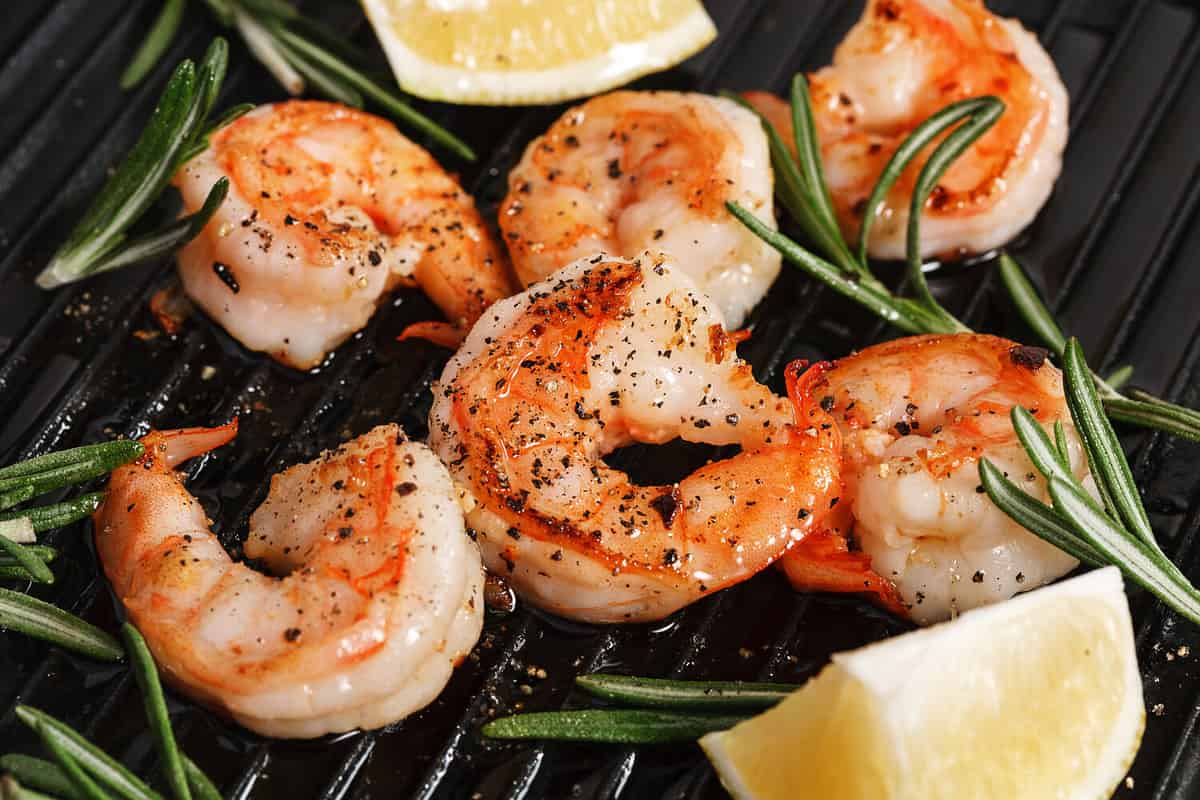
There's no limit to the ways you can include shrimp or prawns in your lunch or dinner meals.
©KudPhotoCreate/Shutterstock.com
When Should You Use Prawns vs Shrimp?
Even though prawns and shrimp are pretty different when it comes to their scientific classifications and living environment, there’s not as much difference in the kitchen. Choosing between prawns or shrimp in your recipe has more to do with what’s available and even the cost.
Both prawns and shrimp have similar nutritional profiles and are both good sources of protein. They also have healthy fats and can be a good source of other vitamins and minerals as well.
Prawns do tend to be sweeter than shrimp, but this difference in flavor may not be as noticeable if you’re adding them to a recipe with seasonings or sauce. If you’re serving them alone, you may have a preference for one or the other.
Can You Substitute Prawns for Shrimp?
Considering their similarities in a culinary sense, you might wonder if you can substitute prawns for shrimp or vice versa. There’s no reason why you can’t substitute shrimp for prawns since they have similar tastes and nutritional values.
If you’re looking for prawns but can only find shrimp, you can usually use them interchangeably. The main reason why you might prefer one over the other is the distinct size of the shrimp. Prawns are generally the larger of the two with the largest prawn being a tiger prawn that can grow up to a foot in size. Some shrimp species can get pretty large as well, but you won’t usually find these species for sale in the grocery store.
A Quick Comparison of Prawns vs. Shrimp
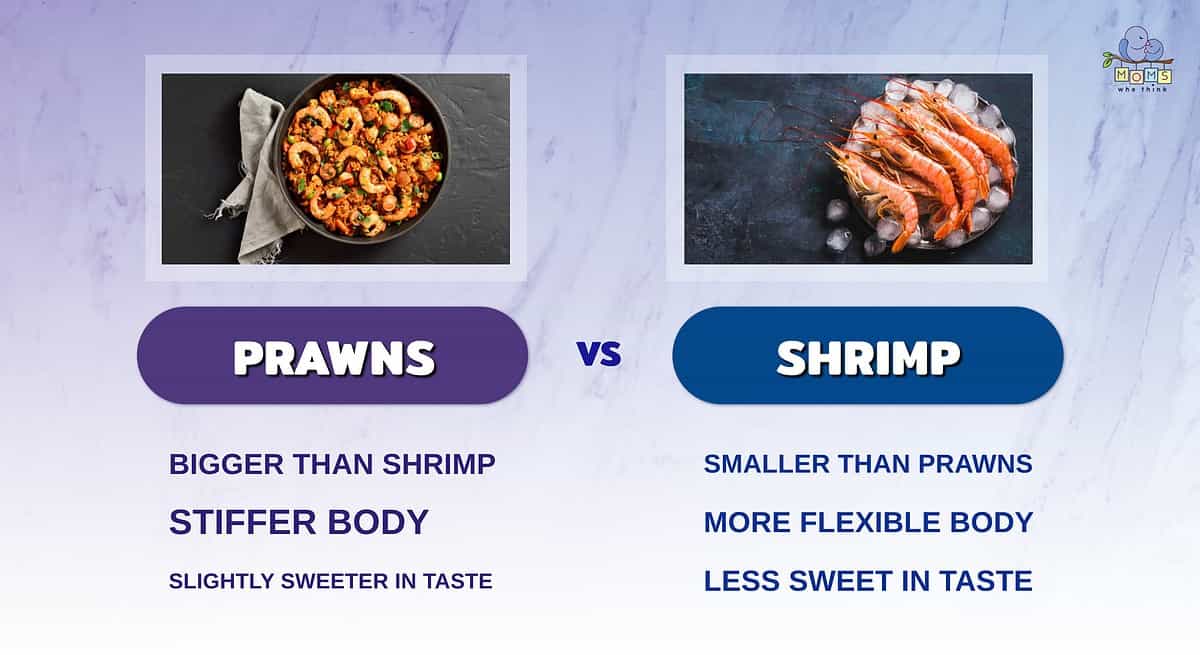
Prawns are generally larger than shrimp, with a stiffer body. Both of them have a similar taste, but prawns are generally considered just a bit sweeter. You can easily swap these two for each other, but keep the size difference in mind. While some shrimp can get quite large, the largest of prawns are considerably bigger than the largest of shrimp. If a recipe is reliant on prawns' large size, swapping them for shrimp may not be easy.
Shrimp Recipes
Print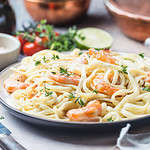
Creamy Basil Shrimp Fettuccine
- Yield: 4 servings
Ingredients
8 ounces uncooked fettuccine
1/4 cup chopped onion
2 garlic cloves, minced
2 Tablespoons olive oil
1/4 cup all-purpose flour
1 can (12 ounces) fat free evaporated milk
1 teaspoon salt
1/4 teaspoon white pepper
1/8 teaspoon cayenne pepper
1 pound uncooked shrimp, peeled and deveined
2 Tablespoons minced fresh basil or 2 teaspoons dried basil
Instructions
1. Cook fettuccine according to package directions.
2. While fettuccine is cooking, sauté the onion and garlic in oil in a nonstick frying pan, until tender.
3. In a small bowl, whisk together the flour and evaporated milk until smooth.
4. Add the flour mixture to the frying pan, stirring well. Stir in the salt, white pepper and cayenne pepper.
5. Bring to a boil; cook and stir for 2 minutes or until thickened.
6. Reduce heat. Stir in shrimp and basil.
7. Simmer, uncovered, for 4 minutes or until shrimp turn pink.
8. Drain the fettuccine and place in a large bowl. Add the shrimp mixture and toss to coat.
Nutrition
- Serving Size: 2½ cups
- Calories: 439
- Sodium: 695mg
- Fat: 10g
- Saturated Fat: 1.5g
- Carbohydrates: 49g
- Fiber: 3g
- Protein: 36g
- Cholesterol: 172mg
The image featured at the top of this post is ©Bigc Studio/Shutterstock.com
